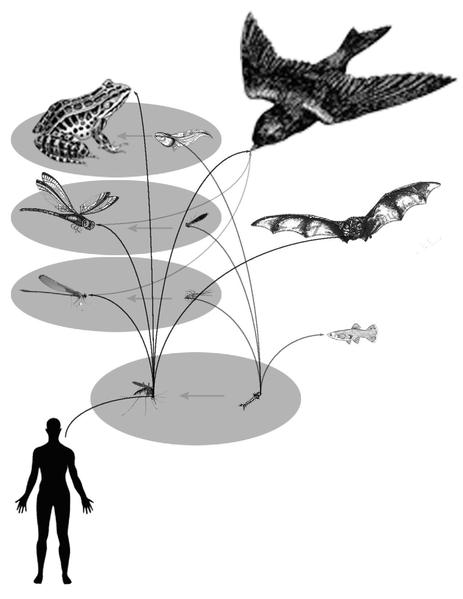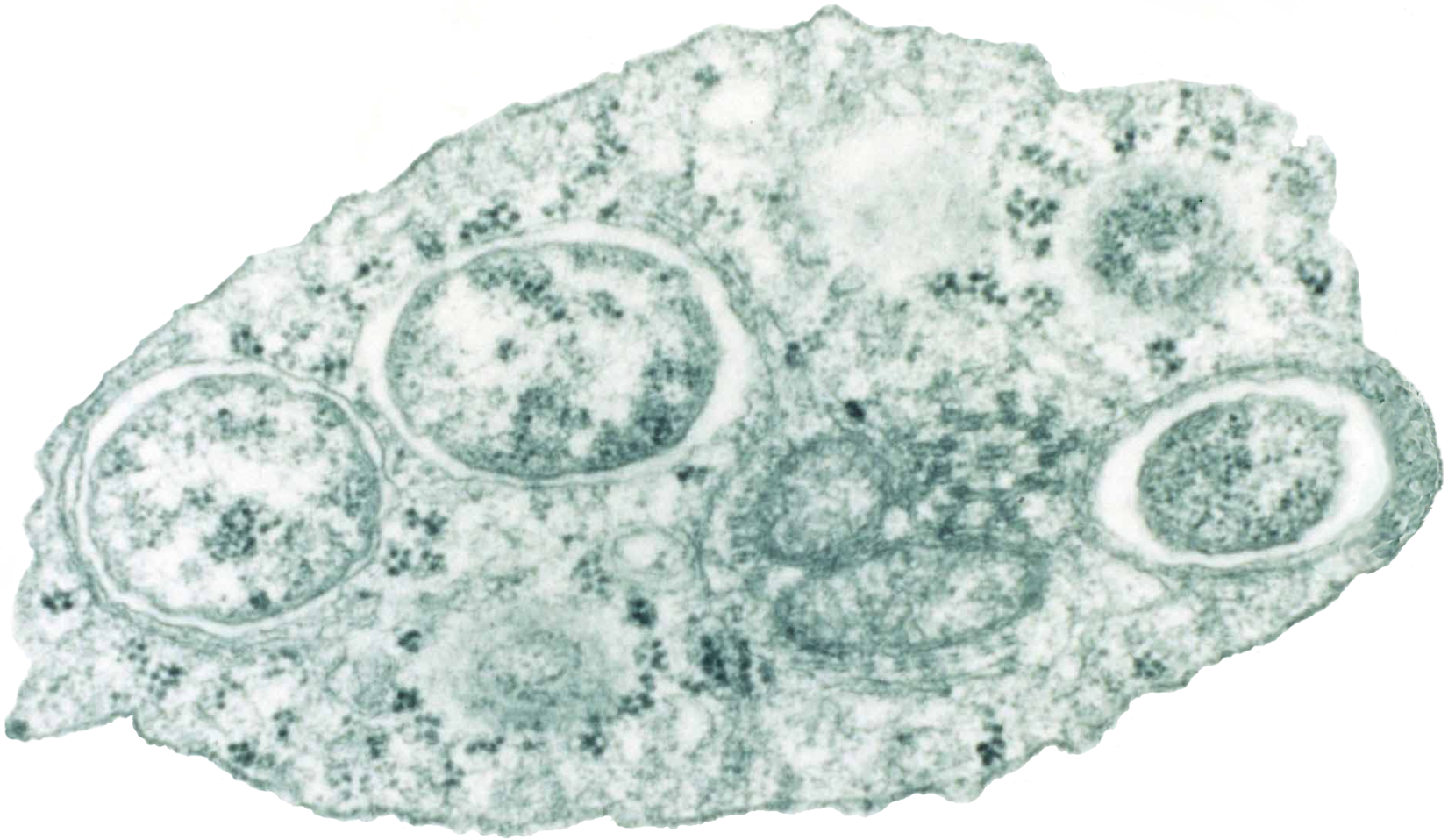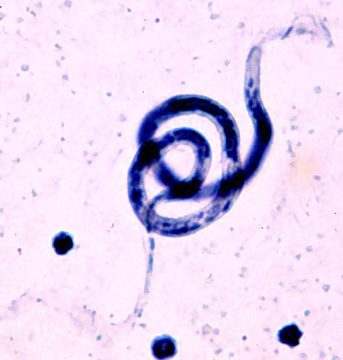Interactions
Brugia malayi interacts with many different organisms, one of them being a definitive host. B. malayi is a parasitic organism that resides in the lymphatic system of its definitive host. It is most recognized for living and hosting on humans, cats, monkeys, and forest carnivores (ADW 2003). However, the parasite has become highly adapted to the physiology of the human body. Therefore humans have become its preferred, definitive host. This parasitic organism feasts on the body fluids, lymphatic tissue, and blood of humans. It is also the main cause of the infectious disease lymphatic filariasis, more commonly known as elephantiasis (CDC 2013).
Brugia malayi not only interacts with a definitive host, such as humans, but also depends on mosquitos exploiting them as intermediate hosts. During a mosquito’s blood meal of an infected human, or other host, the mosquito ingests the sexually produced larvae of B. malayi. Sequentially the mosquito carries B. malayi larvae, known as microfilariae, and can infect other potential hosts (Brugia malayi Stanford University 2009). However, the transmission of B. malayi can also occur without the help of the intermediate host mosquito. If a human undergoes a blood transfusion from a contaminated donor, the larvae in the blood can infect the recipient (CDC 2013).
Parasites in general include a vast number of species, but they are rarely incorporated into food webs. Only recently are parasites beginning to be included in more modern food webs, causing for a much more complex and in-depth web. For Brugia malayi the web becomes complicated due to the fact that the parasite occupies two hosts, the mosquito and the human (Lafferty et al 2008).
This article takes a deeper look into the complex processes of including parasites in food webs.
There are no known predators targeting B. malayi directly. However, organisms that prey on the hosts of B. malayi also ingest the parasite. It is typical that humans are not a specific prey for other animals, but it is true that certain animals may eat humans consequently consuming B. malayi as well. In this case the mortality of B. malayi and the larvae are extremely high, due to the fact that most of the parasites do not reach suitable and appropriate hosts after being ingested (Brugia malayi Stanford University 2009).
 Mosquitos
are the intermediate host for B. malayi larvae; therefore they are
also an intricate part of the parasite’s food web. Unlike humans, mosquitos
have several predators. The leading hunters for mosquitos include:
frogs,
toads,
damselflies, bats,
dragonflies, Gambusia affinis also known as the mosquitofish,
and the purple martin (West Baton Rouge Parish Council 2014). These
predators may eat a mosquito infected with B. malayi larvae,
therefore ingesting the parasite larvae as well. Mortality for the larvae in
these cases is almost certain (Brugia malayi Stanford University
2009).
Mosquitos
are the intermediate host for B. malayi larvae; therefore they are
also an intricate part of the parasite’s food web. Unlike humans, mosquitos
have several predators. The leading hunters for mosquitos include:
frogs,
toads,
damselflies, bats,
dragonflies, Gambusia affinis also known as the mosquitofish,
and the purple martin (West Baton Rouge Parish Council 2014). These
predators may eat a mosquito infected with B. malayi larvae,
therefore ingesting the parasite larvae as well. Mortality for the larvae in
these cases is almost certain (Brugia malayi Stanford University
2009).
Brugia malayi has also developed a
mutualistic relationship through endosymbiosis with bacteria of the genus
Wolbachia. Wolbachia aids in molting, reproduction,
survival and provides different nucleotides for B. malayi(Melnikow
et al 2013). In return the bacteria receive nourishment, protection and
essential amino acids (Foster et al 2005). Wolbachia is present in
all life cycle stages and is believed to have coexisted with B. malayi for
millions of years! Scientists believe the elimination of this bacterium
could help significantly in fighting and eliminating
the infectious parasite (Melnikow et al. 2013).

Come take a look at the devastating Effects B. malayi has on humans!
←Reproduction Home Effects on Humans→
